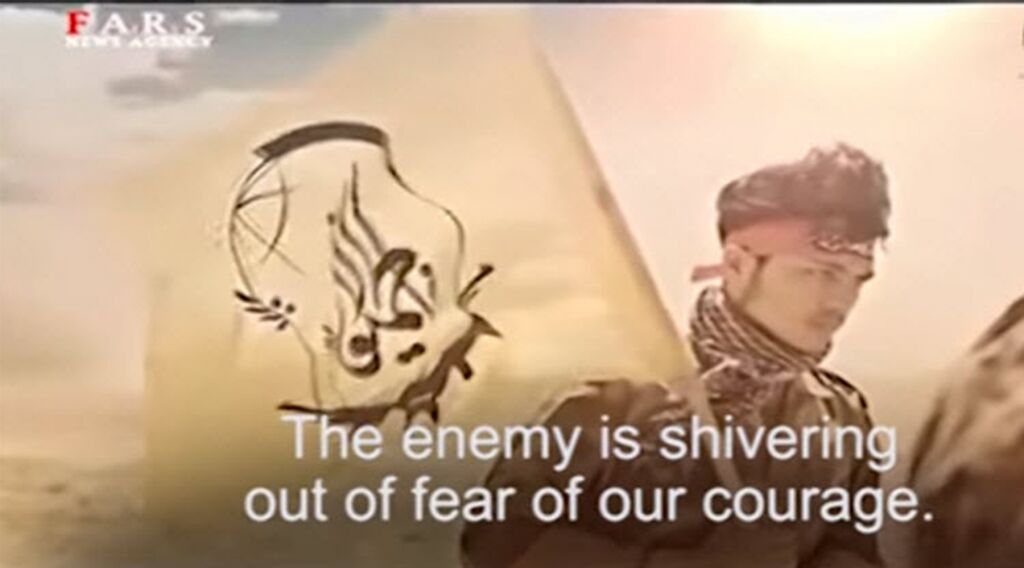
Iran Wants to Use More Afghan Refugees in the Battle for Syria
In Iran’s battle against the West to uphold Syrian President Bashar Assad’s government, Iran is stepping up its recruitment of mercenaries from another ravaged population: Afghanistan.
Afghan recruits join what is called the Fatemiyoun Brigade, named after Mohammed’s daughter Fatima. Iranian media claims the brigade numbers up to 20,000 men. They are recruited from a number of places, but many come from the estimated 1 million undocumented Afghan refugees in Iran and the persecuted Shiite Afghans in Damascus, Syria.
Using Afghan fighters to bolster Assad’s government forces is not new. As early as October 2012, there has been documented evidence of Afghan Shiites joining the battle. But the details are becoming better known, as they have become increasingly publicized in Iran’s media. Some Afghans have joined for religious reasons, but others fight for cash, which can be up to $700 a month—a figure far above even many professional soldiers. Even among the United States-backed rebel groups operating in Syria’s south, it is reported that most men make under $100 per month.
Both the Fatemiyoun Brigade and Tehran have denied for years that they are working together. Most believed those claims were absurd. And in March, when Iranian Supreme Leader Ayatollah Ali Khamenei met with families of Afghans killed in Syria to praise their sacrifices—saying, “I am proud of you”—the skeptics were proved right.
On June 7, Iran’s government released a promotional video clip aimed at recruiting more Afghan nationals. For some of the 1 million undocumented refugees, it could look like a way out of poverty.
The video was dedicated to the “unsung heroes of the Earth, the renowned of the skies, and the combatants of the Fatemiyoun [Brigade].” News service provider Iran Focus described the contents:
[It includes] scenes of a man from Afghanistan looking over photos of Afghans who have died in the Syrian conflict. He is encouraged by a young boy and girl to join the war.
He then changes into an army uniform in front of a picture of the Iranian government’s Supreme Leader Ali Khamenei and wears the Fatemiyoun militia emblem on his arm. Throughout the clip, another man sings a propagandistic song with Afghan lyrics. The lyrics say in part: “To the raging enemy we are the sharp sword. We are from the Islamic nation and the country of Afghanistan. We are the mentors of conviction, and we are the adherents of the Koran. We are the heirs to the blood, the heirs to the martyrs. We will fill the world with the resonance of our fight, of our steadfastness and firmness, and of our will and determination.”
The National Council of Resistance of Iran (ncri) released a statement on April 8 that showed how the Quds Force (the special forces unit of the Islamic Revolutionary Guard Corps, irgc) offices in Tehran compelled Afghans to fight in Syria. The Quds Force abuses “the extreme poverty of Afghan nationals and their need to attain legal documents to have them go to Syria. In many cases, Afghan prisoners, or those with death sentences, are pardoned if they volunteer to fight in Syria.”
Scott Peterson, reporting for the Christian Science Monitor, told the stories of Afghan men fighting in, or trying to escape from, the war in Syria. One unnamed young man from Herat, a largely Shiite town in Afghanistan near the Iranian border, recounted how he fled from his initial Iranian recruitment:
“I thought, ‘If I do not accept, they will kidnap me and kill me.’ It was very dangerous,” recalls the would-be recruit. “In front of them I accepted everything. I said, ‘I am ready to leave for Syria and take part in the war.’ But I thought to myself, ‘What should I do? How to escape?’”
Shaking with anxiety and sweating at first, he tells how his plan to leave Afghanistan was diverted by Iranian recruiters; about how he felt compelled to agree to join the war; about how he lied to flee Iran to escape that commitment; and about why—now months later, and back in Afghanistan—he fears retribution and covers his face in public to avoid being recognized.
Iranian youths have refrained from joining the war in Syria, which is part of the reason for the recruiting of Afghans. Khamanei has had to use the irgc—even though up to 50 brigadier generals have already been killed in Syria so far. Shahin Gobadi of the Foreign Affairs Committee of the ncri reasoned that the steadily rising casualties in Syria “has led to scorn for the regime and its isolation even among Afghan refugees in Iran to a point where Khamenei personally met with the families of the regime’s Afghan mercenaries who were killed in Syria to boost their morale ….”
Khamenei’s desperation to keep Assad in power is becoming clear. Under Assad, Syria is a major ally of Iran’s, but if he falls, the Sunni majority population is likely to flip the tables. Gobadi believes that “Syria has turned into a total quagmire and strategic impasse for the Iranian regime. Ali Khamenei … views an end to Assad’s rule as a red line for the survival of the clerical regime.” The Afghans targeted in the recruitment video are a crucial part of maintaining Iran’s influence in Syria—and confidence at home.
Where there is chaos in the Middle East, Iran can usually be found trying to gain influence. Although the Syrian civil war hasn’t shown any clear signs of an emerging victor, Iran seems to be grasping for any help it can get to remain in the fight. The Trumpet has predicted that, at some point, Syria will break from its alliance with Iran. Not all the details are clear, but to understand what the end result will be, read our analysis in “Making Sense of Syria.”
